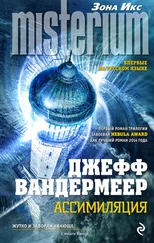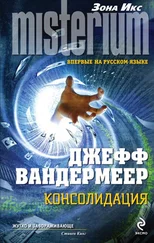Джефф Вандермеер - The Thackery T. Lambshead Cabinet of Curiosities
Здесь есть возможность читать онлайн «Джефф Вандермеер - The Thackery T. Lambshead Cabinet of Curiosities» весь текст электронной книги совершенно бесплатно (целиком полную версию без сокращений). В некоторых случаях можно слушать аудио, скачать через торрент в формате fb2 и присутствует краткое содержание. Жанр: Фэнтези, на английском языке. Описание произведения, (предисловие) а так же отзывы посетителей доступны на портале библиотеки ЛибКат.
- Название:The Thackery T. Lambshead Cabinet of Curiosities
- Автор:
- Жанр:
- Год:неизвестен
- ISBN:нет данных
- Рейтинг книги:5 / 5. Голосов: 1
-
Избранное:Добавить в избранное
- Отзывы:
-
Ваша оценка:
- 100
- 1
- 2
- 3
- 4
- 5
The Thackery T. Lambshead Cabinet of Curiosities: краткое содержание, описание и аннотация
Предлагаем к чтению аннотацию, описание, краткое содержание или предисловие (зависит от того, что написал сам автор книги «The Thackery T. Lambshead Cabinet of Curiosities»). Если вы не нашли необходимую информацию о книге — напишите в комментариях, мы постараемся отыскать её.
The Thackery T. Lambshead Cabinet of Curiosities — читать онлайн бесплатно полную книгу (весь текст) целиком
Ниже представлен текст книги, разбитый по страницам. Система сохранения места последней прочитанной страницы, позволяет с удобством читать онлайн бесплатно книгу «The Thackery T. Lambshead Cabinet of Curiosities», без необходимости каждый раз заново искать на чём Вы остановились. Поставьте закладку, и сможете в любой момент перейти на страницу, на которой закончили чтение.
Интервал:
Закладка:
St. Brendan’s Shank
Documented by Kelly Barnhill
Museum:The Museum of Medical Anomalies, Royal College of Surgeons, London
Exhibit:St. Brendan’s Shank
Medium:Copper, silver
Date:1270s (?) (disputed)
Origin:The monks of the Isle of St. Brendan, also known as the Isle of the Blessed (disputed); the Faroe Islands (undisputed point of collection)
St. Brendan’s Shank is a small device—eight inches long from tip to tip—made from thirty-seven interlocking copper globes, circular hinges, a narrow headpiece (with burrowing snout), and a winding key connected to a clockwork interior (silver alloy and iron). The device itself has an uncannily efficient winding system—a single turn of the pin sets its lifelike wriggle in motion for days, even months, at a time. More than one biologist has noted the device’s astonishing mimicry of the movements, behaviors, and habits of a tiny subspecies of the Turrilepad, or armored worm, called the Turrilepus Gigantis, found in the North Sea and other cold-water locations. Like its prehistoric cousins, the segmented body of the Turrilepus Gigantis was covered in a tough, calcitic armor, had a sharp, burrowing snout, and exhibited a distinct lack of fastidiousness when it came to its diet.
The name of the Shank originates with the brethren of the Order of Brendan, although not from the saint himself. St. Brendan (called the Navigator, the Voyager, and the Bold) was no inventor, being far more interested in the navigational utility of the heavenly stars, the strange insistence of the sea, and, in one famously preserved quotation, the curious hum of his small boat’s leather hull against the foamy breasts of the ocean’s waves: “So like the suckling child, I return, openmouthed, to the rocking bosom of the endless sea.” He was not a man of science, nor of medicine, nor of healing. He was known for his ability to inspire blind devotion and ardent love in his followers, who willingly went to the farthest edges of the known world to found fortresses of prayer, only to have their beloved abbott leave them behind.
One such monastery existed for many centuries on the cliffs of the Isle of St. Brendan—also known as the Isle of the Blessed—a lush, verdant island once inhabited by a strange pre-Coptic civilization that had since vanished, leaving only a series of man-made saltwater lakes that appeared to have some religious significance. The monks soon added to the many strange tales surrounding the place, for it was said that the monks themselves would never die unless they left the island.

St. Brendan’s Shank, made of interlocking copper pieces, with over thirty springs to keep the pieces in tension with one another.
It was here that the idea for the Shank appears to have originated, although the sophistication of the device has led to theories of outside collusion. Some, for example, believe that the device shows evidence of workmanship common to the Early Middle Period of Muslim scientific flowering in the 1200s, specifically the influence of the (nonmonastic) brothers known as Banu Musa, and their Book of Ingenius Devices . Given the amount of traveling the monks did over the centuries, it is not impossible that they came into contact with either the Banu Musa or equivalent.
Whether or not this legend is true, it seems incontestable that the development of the Shank followed eventually from an event in 1078, when the lonely order on the island found itself an unwilling host to the unstable and murderous son of Viking despot Olaf the Bloodless, King of Jutland. The arrival of the young Viking on the isle was recorded in the sagas of a bard known only as Sigi, who was present with the Viking entourage accompanying the prince.
“The son of Olaf, upon hearing tell of an Isle populated by the Monks-Who-Cheated-Death, became inflamed by desire to find the place and conquer its secrets. The Isle, like a coward, made itself difficult to find, but the Prince did give chase through storm, through mist, and through ice until at last, the Isle was in our sights. We arrived with swords in hand, slicing open the first two monks who greeted us, as a demonstration of force and might. It was in this way that we learned that the Monks-Who-Cheated-Death had only cheated the death of cowards and slaves—a death in a bed, a death of age, a death of sickness. The death of Men cannot be cheated, nor can their Magics wish it away. And nothing, not even their craven God, is mightier than a Jutland sword. The monks knelt and trembled and wailed before us.”
This account is contradicted in part by the journal of Brother Eidan, abbott of the order since the departure of their founder-saint: “The children of the children of the men who once laid waste to our homeland arrived upon our shores unexpectedly. They were tired and hungry and sick at heart. Our souls were moved to pity and we welcomed them with open arms. Their demands seemed beyond our abilities or strength to fulfill, but we had no choice but to try, as otherwise they would have put us all to the sword.”
The prince suffered from a wasting disease that Sigi and other chroniclers had either covered up or had judiciously neglected to mention—this was the real reason the prince had come to the monks’ island. What followed appeared to consist of a series of ablutions in the icy waters of the island’s western bay. The monks told the prince they staved off death by stripping naked, bearing their skin to the morning light, and plunging into the water. Of course, if their other accounts are to be believed, any longevity, possible or impossible, came simply from prayer and from other essential properties of the island.
Nevertheless, after the young man stripped, winced, and shivered, submerging his body every morning for a full week, a miracle occurred. The son of King Olaf emerged from the water a new man, naked and shining, blessed with strength and health. “My disease is devoured and vanquished,” he cried, and the Viking horde gave a halfhearted cheer. They left the island in a relatively unpillaged condition. No account tells of exactly how the prince was cured, however, despite the first reference in the literature to a “creature of healing.” Nor is there any explanation for the prince’s eventual death two years later, except for an obscure fragment from Sigi referring to “bleeding.” Perhaps coincidentally or perhaps not, Brother Eidan died prior to the prince’s recovery, and his successor, Brother Jonathan, notes only that “he made his sacrifice for our sake, and would that such a sacrifice not need be made again.” 1

A medieval representation of St. Brendan and his followers worshipping atop a floating sea monster.
The subsequent bleeding caught no one’s attention, but news of the incredible healing spread slowly throughout Europe, with the result that many an expedition put forth into the northern seas. However, the island proved ridiculously difficult to find again. Many tried and failed, some sailing to their deaths. From these attempts grew the legend that the isle moved across the seas, from charted waters to the uncharted danger of “Here be dragons.” Over the centuries, it would reportedly be sighted in view of the Canaries, in the midst of the Hebrides, off the coast of Newfoundland, and once apparently passed so close to Iceland that the bards sang of “waving at the holy men,” interpreted by some scholars as a reference to extreme drunkenness instead.
Читать дальшеИнтервал:
Закладка:
Похожие книги на «The Thackery T. Lambshead Cabinet of Curiosities»
Представляем Вашему вниманию похожие книги на «The Thackery T. Lambshead Cabinet of Curiosities» списком для выбора. Мы отобрали схожую по названию и смыслу литературу в надежде предоставить читателям больше вариантов отыскать новые, интересные, ещё непрочитанные произведения.
Обсуждение, отзывы о книге «The Thackery T. Lambshead Cabinet of Curiosities» и просто собственные мнения читателей. Оставьте ваши комментарии, напишите, что Вы думаете о произведении, его смысле или главных героях. Укажите что конкретно понравилось, а что нет, и почему Вы так считаете.












